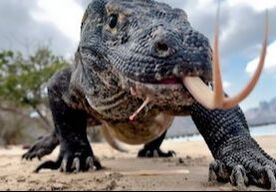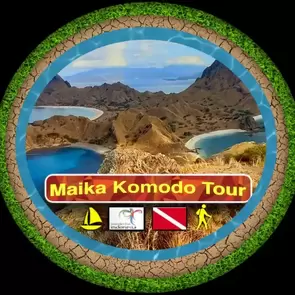Learn about the developments that have taken place in Komodo National Park
|
Komodo National Park is a fascinating destination that boasts rich biodiversity and breathtaking natural beauty. Located in Indonesia, this renowned national park is home to the famous Komodo dragon, the world's largest living lizard. Beyond its iconic reptilian inhabitants, the park has a captivating history that encompasses both natural and cultural developments. In this article, we will delve into the historic developments of Komodo National Park, exploring its evolution, significant milestones, and conservation efforts.
|
IntroductionKomodo National Park, situated in the Lesser Sunda Islands of Indonesia, encompasses a vast area of land and marine environments. The park was established with the aim of preserving the unique biodiversity found within its boundaries and protecting the Komodo dragon, a species found nowhere else on Earth. However, the history of the park goes back much further than its official establishment in 1980.
Early History and DiscoveryThe remote islands within the vicinity of Komodo National Park have a long history dating back thousands of years. Evidence suggests that early human settlements existed in the region, and interactions with the Komodo dragons can be traced back centuries. However, it was not until the early 20th century that the existence of these impressive reptiles became widely known to the rest of the world.
Establishment of Komodo National ParkRecognizing the importance of preserving the Komodo dragon and its habitat, Komodo National Park was officially established in 1980. The park encompasses three main islands: Komodo, Rinca, and Padar, along with numerous smaller islands. This marked a crucial milestone in the conservation of not only the Komodo dragons but also the unique flora and fauna found within the park's boundaries.
UNESCO World Heritage SiteIn 1991, Komodo National Park was designated as a UNESCO World Heritage Site, further highlighting its global significance. The park's extraordinary terrestrial and marine ecosystems, including coral reefs, seagrass beds, and mangrove forests, earned it this prestigious recognition. The UNESCO status brought increased attention and resources to the park's preservation efforts.
Threats to the ParkDespite its protected status, Komodo National Park faces various threats that put its fragile ecosystems at risk. Illegal poaching, unsustainable fishing practices, habitat degradation, and climate change pose significant challenges to the park's biodiversity. Additionally, the rise in tourism has raised concerns about the impact on the environment and the well-being of the Komodo dragons.
Conservation InitiativesTo address the threats facing Komodo National Park, numerous conservation initiatives have been implemented. These include enhanced monitoring and anti-poaching measures, sustainable fishing practices, habitat restoration projects, and community engagement. Collaboration between local authorities, NGOs, and international organizations plays a crucial role in the ongoing conservation efforts.
Ecotourism and Sustainable PracticesRecognizing the potential of ecotourism as a conservation tool, Komodo National Park has embraced sustainable practices in tourism. Strict visitor guidelines, such as limited group sizes and designated trails, help minimize the impact on the fragile ecosystems. Local communities are actively involved in ecotourism activities, providing opportunities for economic development while ensuring the protection of the park's natural and cultural heritage.
|
We Offer Komodo Tour Packages and Flores Overland Packages Komodo National Park Tours 1 Day Trips 2 Day / 1 Night 3 Day / 2 Night 4 Day / 3 Night Flores Overland tours
We can visit places such as;
|
Research and Scientific Contributions
Komodo National Park serves as an invaluable research site for scientists and researchers from around the world. Studies conducted within the park contribute to our understanding of evolutionary biology, ecology, and marine conservation. Through research collaborations, ongoing monitoring, and scientific discoveries, valuable insights are gained, aiding in the park's management and conservation strategies.
Local Communities and Cultural Heritage
The communities living in and around Komodo National Park have a deep connection to the land and the sea. Their traditional knowledge and cultural heritage are integral to the park's identity and conservation efforts. Engaging with local communities, empowering them through sustainable livelihoods, and preserving their cultural practices are crucial for the long-term success of conservation initiatives.
Future Challenges and Opportunities
As Komodo National Park moves forward, it faces both challenges and opportunities. Climate change poses a significant threat to the park's ecosystems, requiring adaptive strategies to mitigate its impacts. Balancing conservation efforts with sustainable development and tourism presents an ongoing challenge. However, through continued collaboration, research, and community involvement, the park can thrive while safeguarding its natural and cultural heritage.
Komodo Tours and Diving
At Maika Komodo Tour & Diving, we are proud to offer a comprehensive range of Komodo tour packages and scuba diving experiences. Whether you're seeking a day trip or a multi-day liveaboard adventure, we have options to suit every preference. Our daily trips provide the opportunity to explore the captivating beauty of Komodo National Park, while our multiday liveaboard trips offer the chance to immerse yourself in the wonders of this unique destination. With our experienced guides, comfortable accommodations, and top-of-the-line diving equipment, we strive to create unforgettable experiences for our guests. For Scuba diving in Komodo, we also offer many options. Join us at Maika Komodo Tour & Diving for a truly exceptional journey through the enchanting landscapes and underwater marvels of Komodo National Park.
Conclusion:
Komodo National Park's historic developments have shaped it into a remarkable conservation area, renowned for its biodiversity and the majestic Komodo dragon. From its early history and discovery to its establishment as a national park and UNESCO World Heritage Site, the park has overcome various challenges to protect its natural treasures. Through conservation initiatives, sustainable practices, and engagement with local communities, Komodo National Park continues to inspire and educate visitors while serving as a beacon of hope for the preservation of our planet's precious ecosystems.
To contact our Komodo Dive shop or Tour agency, you can reach us through WhatsApp or Phone at +6281238553678
FAQs
How long do Komodo dragons live?
Komodo dragons have an average lifespan of around 30 years in the wild, although some individuals have been known to live up to 50 years.
Are Komodo dragons dangerous to humans?
While Komodo dragons are capable predators, they generally avoid human contact. However, caution should be exercised when visiting their habitat and following the park's safety guidelines.
Can you see marine life in Komodo National Park?
Absolutely! The park's marine ecosystems are teeming with vibrant coral reefs, diverse fish species, and other marine life, making it a paradise for snorkelers and scuba divers.
Are there accommodations available within Komodo National Park?
Yes, there are accommodations available on the nearby islands of Komodo, Rinca, and Labuan Bajo. These range from budget-friendly guesthouses to luxurious resorts.
How can I contribute to the conservation efforts of Komodo National Park?
You can support the park's conservation efforts by adhering to the visitor guidelines, being mindful of your ecological footprint, and supporting local initiatives that promote sustainability and community engagement.
In conclusion, Komodo National Park's history is as captivating as the park itself. From its early interactions with humans to its recognition as a UNESCO World Heritage Site, the park has undergone significant developments. By prioritizing conservation, engaging with local communities, and embracing sustainable practices, Komodo National Park stands as a testament to the power of preservation and the wonders of our natural world. So, plan your visit and embark on a journey to witness the historic and awe-inspiring beauty of Komodo National Park.
If you are in Flores for a longer time and looking for Things to do in Flores Indonesia, check out our 100 Things to do in Flores page. If you are interested in a more private and luxury style trip, we also offer Yachts for Private Charter in Komodo.
Contact Maika Komodo Tours for any questions you may have.


